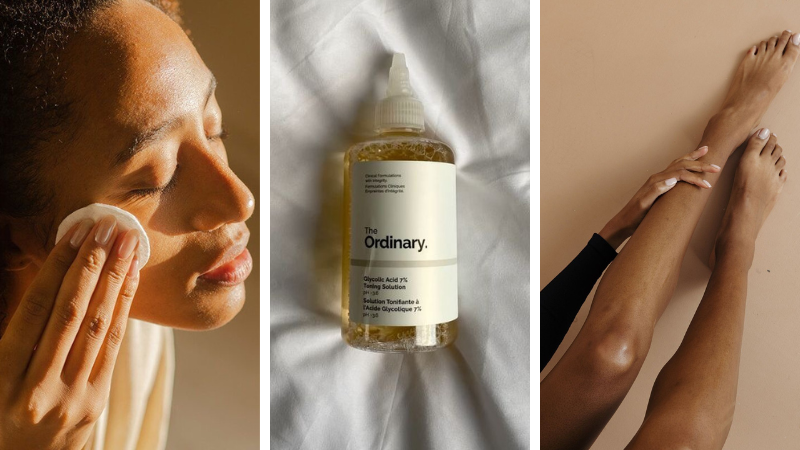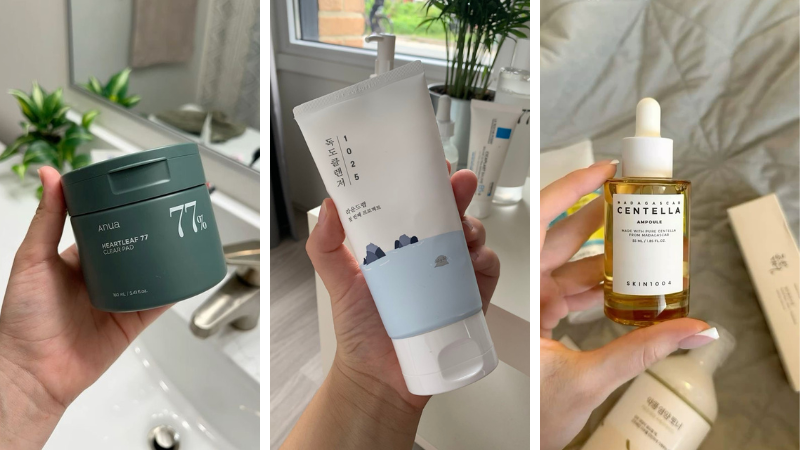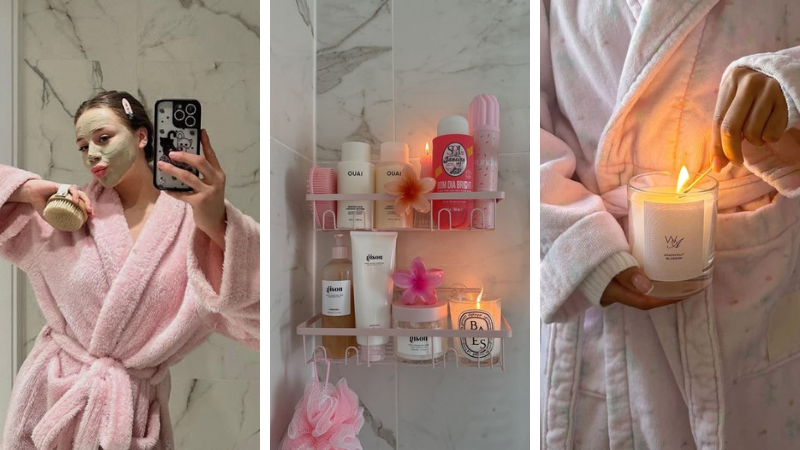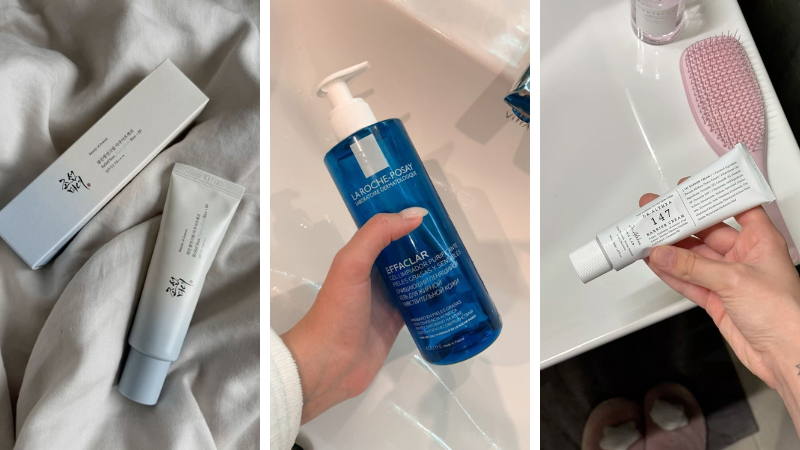Your Foolproof Guide to The Ordinary Glycolic Acid 7% Toner (Without Messing Up Your Skin Barrier)
Here’s the thing about viral skincare — I’ve definitely been that girl who bought a product just because it was all over my feed. Glowing reviews, aesthetic shelfies, influencers swearing it changed their lives — and I’m influenced. But here’s the catch: no one tells you how actually to use it, and before you know it, your “glow-up” turns into “why does my face feel like it’s on fire?” Been there, done that, regretted it.
So here’s the deal — I don’t gatekeep. Not when I’ve made the rookie mistakes, survived the purge (RIP to my pre-glow era), and finally cracked the code on The Ordinary Glycolic Acid 7% Toner.
It’s a cult favorite for a reason — but only if you know how to use it right. Because active acids aren’t playtime. You can’t just slap it on and expect baby-soft skin overnight. You need to apply moisturizer five seconds later.
So grab your glycolic acid toner and let’s break it all down — no BS, no confusion, just skincare BFF energy.
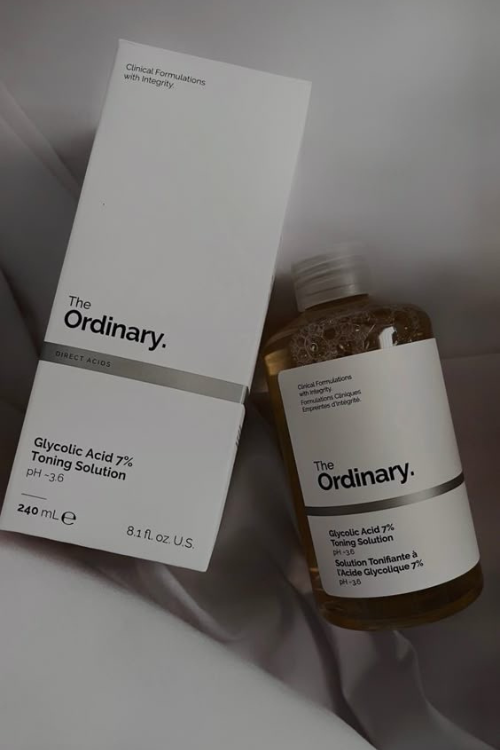
Step-by-Step: The Glow-Up Routine
1. Night Owl Only, Please
This stuff is strictly for your PM routine. Using it in the morning? Girl, that’s a fast-track ticket to Sunburn Central. Save it for when the sun’s clocked out.
2. Double Cleanse Like You Mean It
You want your skin squeaky clean – no makeup, no grime, no “I only washed it with water” energy. Oil cleanser first, then your gentle face wash. Trust me, it makes a difference.
3. DRY Skin is KEY
Do. Not. Apply. On. Damp. Skin. I repeat. If your face is even the tiniest bit wet, the glycolic will go full beast mode and burn your poor skin. Pat it dry, wait a sec, then go in.
4. Apply with a Cotton Pad or Fingers (Up to You)

Either way, sweep or pat gently – don’t go scrubbing like you’re cleaning a dirty dish.
5. WAIT – Literally.
Give it at least 5 mins before putting anything else on top. Scroll through IG, vibe to your fav playlist, just chill. Let it soak in and do its thing.
6. Hydrate Like a Queen
Now’s the time for your non-fancy, basic moisturizer moment. Think CeraVe, Neutrogena, or The Ordinary’s Natural Moisturizing Factors. Nothing active, nothing wild – just chill.
7. SPF Is Non-Negotiable
The next morning, you’d better be layering on that SPF like it’s your personality. Broad spectrum, minimum SPF 50. No excuses.
Pro Tip: If you’re sensitive, sandwich method = toner → moisturizer → toner. (Yup, that’s a thing.)
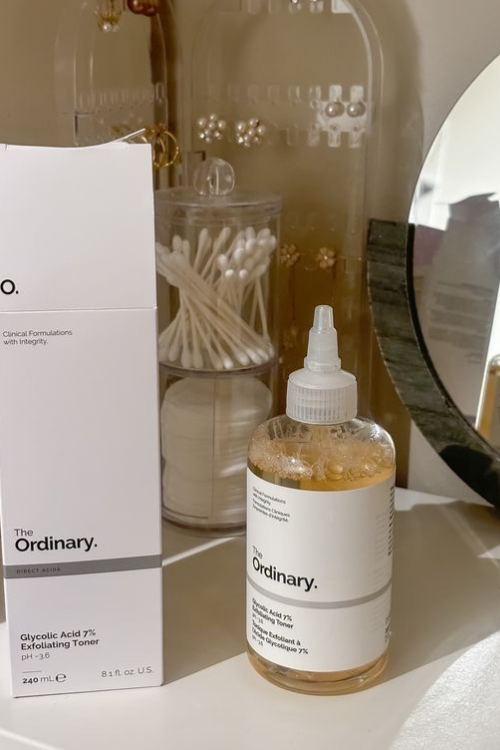
What NOT to Do (aka Skin Sabotage Checklist)
Using It Daily Right Off the Bat
Slow down, superstar. Start with 2-3 times a week max. Let your skin adjust before you go full acid goddess.
Mixing It with Other Actives
No retinol, no vitamin C, no salicylic acid, no benzoyl peroxide – basically, no chaos. On glycolic nights, keep it simple, sweetie.
Using on Broken or Irritated Skin
If you just popped a pimple (don’t lie), waxed, or your skin’s feeling raw – skip the toner. Give your skin time to chill.
Scrubbing + Glycolic = Red Flag 🚩
Please don’t use scrubs or exfoliating brushes with this. Glycolic is already doing the heavy lifting. Don’t overdo it unless you’re into redness and regret.
Daytime Application
GIRL. No. Just no. If you use it during the day, you’re inviting UV damage and drama.
Ingredients You Should Never Mix with Glycolic Acid
Retinol or Retinoids
Two power players don’t always make a dream team. Combining them can cause excessive dryness, irritation, and peeling — think overworked skin begging for a break. Alternate nights instead
Vitamin C (Ascorbic Acid)
Both are acids, both are potent — together, they’re chaos. Using them in the same routine can cause sensitivity and redness. Use Vitamin C in the morning and glycolic at night to keep the peace.
Other AHAs or BHAs
Layering multiple exfoliating acids (like lactic acid, mandelic acid, or salicylic acid) is just asking for a barrier breakdown. One acid at a time, please — your skin can’t multitask that much.
Physical Exfoliants (Scrubs)
Acids already exfoliate deeply, so don’t double down with a gritty scrub. You’ll only end up scratching or over-stripping your skin.
Benzoyl Peroxide
Both are strong actives, but together they can seriously dry out and inflame your skin. Space them out by at least 24 hours.
Niacinamide (right after glycolic)
These combos can cancel each other’s effectiveness and cause flushing for some people. Wait at least 30 minutes between if you must use both.
Fragranced or Alcohol-Heavy Products
Your skin’s already exfoliated — don’t throw in something harsh that’ll sting or burn. Keep post-glycolic products gentle and hydrating.
Harsh Cleansers or Foaming Washes
If your cleanser leaves your face squeaky-clean, it’s too strong for pairing with glycolic acid. Opt for something creamy or hydrating before your toner.
Essential Oils or DIY Lemon Juice Mixes (yikes!)
Let’s not even go there. These can irritate and burn your freshly exfoliated skin faster than you can say “Pinterest hack.”
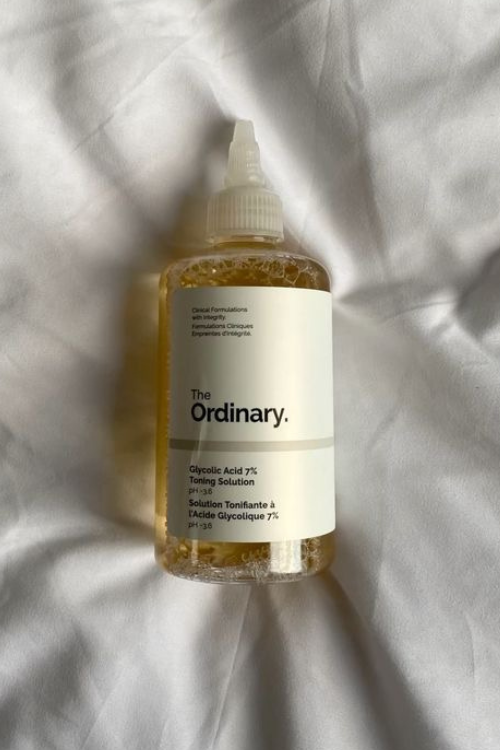
Bonus Tips for Maximum Glow:
- Patch test first — you shouldn’t do trial and error with your face anymore.
- Store it in a cool, dark spot. Acid doesn’t like sunlight either.
- Avoid layering other actives the next day, too, if your skin feels spicy.
- Don’t forget your neck and chest, but go gently. That skin’s soft like butter.
- Pair it with hyaluronic acid serum on non-acid nights for that plump, juicy skin look.
- Got bacne or strawberry legs? Use it with a cotton pad on clean, dry skin, then follow up with a rich body lotion.

- Want smooth AF underarms or feet? Swipe some on post-shower (when fully dry) before moisturizer or Vaseline, and boom – baby-soft skin unlocked.
- Hairline feeling gunky? Use a few drops on your scalp 15 minutes before showering to break up buildup.

Common Side Effects of Glycolic Acid Toner
Skin irritation and burning: A tingling sensation is normal, but if it feels like a burn, it’s your skin screaming “too much!”
Dryness and flaking — over-exfoliating can strip away natural oils, leaving your skin tight, dull, and flaky.
Redness and inflammation — frequent use or high concentration can trigger irritation and visible redness.
Breakouts or purging — glycolic acid speeds up cell turnover, which can temporarily bring hidden pimples to the surface.
Increased sun sensitivity — exfoliated skin becomes extra vulnerable to UV rays, so SPF isn’t optional — it’s mandatory.
Peeling or raw skin — layering glycolic acid with other strong actives like retinol or vitamin C can lead to over-exfoliation.
Stinging when applying other products — a compromised skin barrier means even your gentle moisturizer can feel like it’s on fire.
Hyperpigmentation (in deeper skin tones) — misuse can cause post-inflammatory pigmentation, especially on sensitive skin.
Worsened sensitivity to weather — cold winds, heat, or dryness can suddenly sting or irritate freshly exfoliated skin.
Long-term barrier damage — chronic overuse weakens your skin’s defense, leading to dullness, dehydration, and ongoing irritation.
Wrapping up on The Ordinary Glycolic Acid 7% Toner
This toner can absolutely change your skin game — if you use it right. It’s not about how fast you can glow up; it’s about glowing up the smart way. So go slow, stay consistent, and treat your skin like the main character she is.

